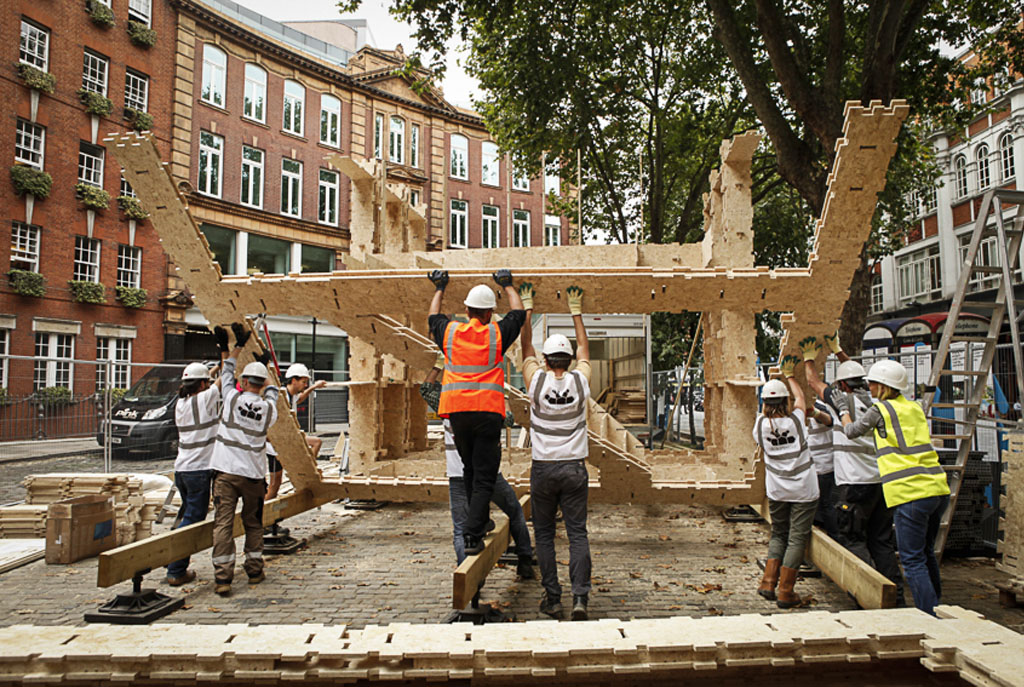03-09-15 // DISTRIBUTING POWER – INTERVIEW WITH JEREMY TILL

Assembly of the “Wiki House” in London, ©Margaux Carron
Bernd Upmeyer, on behalf of MONU, spoke with the British architect, writer, and educator Jeremy Till. He is the head of Central Saint Martins and Pro Vice-Chancellor of the University of the Arts, London. Previously he was Dean of Architecture and the Built Environment at the University of Westminster, and Professor of Architecture and Head of School of Architecture at the University of Sheffield. Till’s research and writing concentrate on the social and political aspects of architecture and the built environment. His written work includes ‘Flexible Housing’, ‘Architecture Depends’ and ‘Spatial Agency’. In 2005 he was one of the editors of the publication “Architecture and Participation” to which he contributed a piece entitled “The Negotiation of Hope”. The interview took place on September 3, 2015.
Architecture and Participation
Bernd Upmeyer: In 2005, you were one of the editors and contri-butors to the book “Architecture and Participation” that brought together, according to the summary, leading international practitioners and theorists, ranging from the 1960s pioneers of participation to some of the major contemporary figures in the field. Could you tell us a bit about these early beginnings? When and how were users first introduced in architecture and urban planning processes? Which of the projects that were mentioned in the book did you find especially interesting and successful?
Jeremy Till: The pieces that I found interesting about the history of participation were, for example, from people such as Giancarlo De Carlo. We translated and published Giancarlo De Carlo’s seminal text, Architecture’s Public. De Carlo and others were using participation as a way to deconstruct what it means to be an architect or to be a designer. I find this aspect of participation interesting because it questions a lot of the premises on which architecture as a profession is founded – the premises of the individual author-hero, the premises of control, and the premise of expertise and so on. Participation undeniably challenges and upsets some of those standard conventions.
BU: The 1960s were probably the years when participatory processes were first introduced, on a more substantial scale, into planning and design processes.
JT: Yes, this is when a lot of people, including N. John Habraken and Giancarlo De Carlo, tried out new things. The 1960s to 1980s were the golden years of participation and of revolutionary ideas in general. Some of the most interesting participatory projects were reserving up to 20% of public budgets to be decided by public vote, so-called participatory budgets. In certain cities in Brazil, such as Porto Alegre, a participatory budget is part of their city processes. A serious proportion of the city’s budget is determined by open participative techniques, which include open meetings, for example. That is very interesting…
…the complete interview was published in MONU #23 on the topic of Participatory Urbanism on October 19, 2015.
Title: Distributing Power
Project: Interview with Jeremy Till
Date: September 2015
Type: Commissioned interview
Topic: Participatory Urbanism
Organizer: MONU
Status: Published
Publications: MONU #23, P. 6-13
Interviewer: Bernd Upmeyer